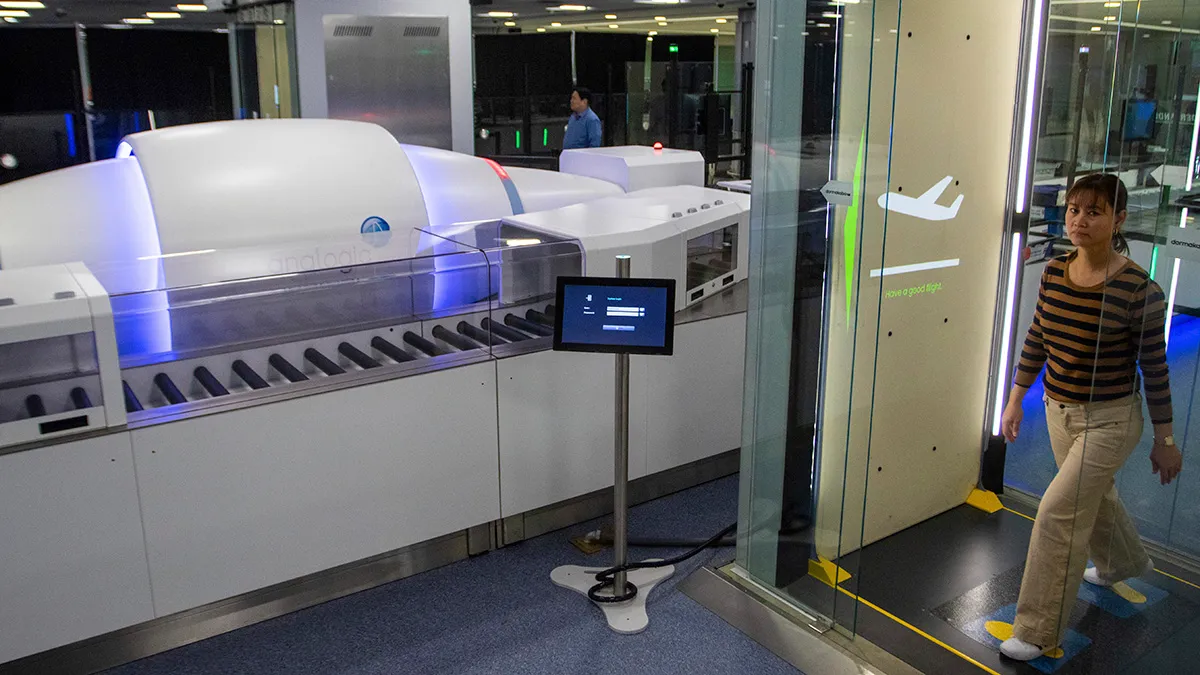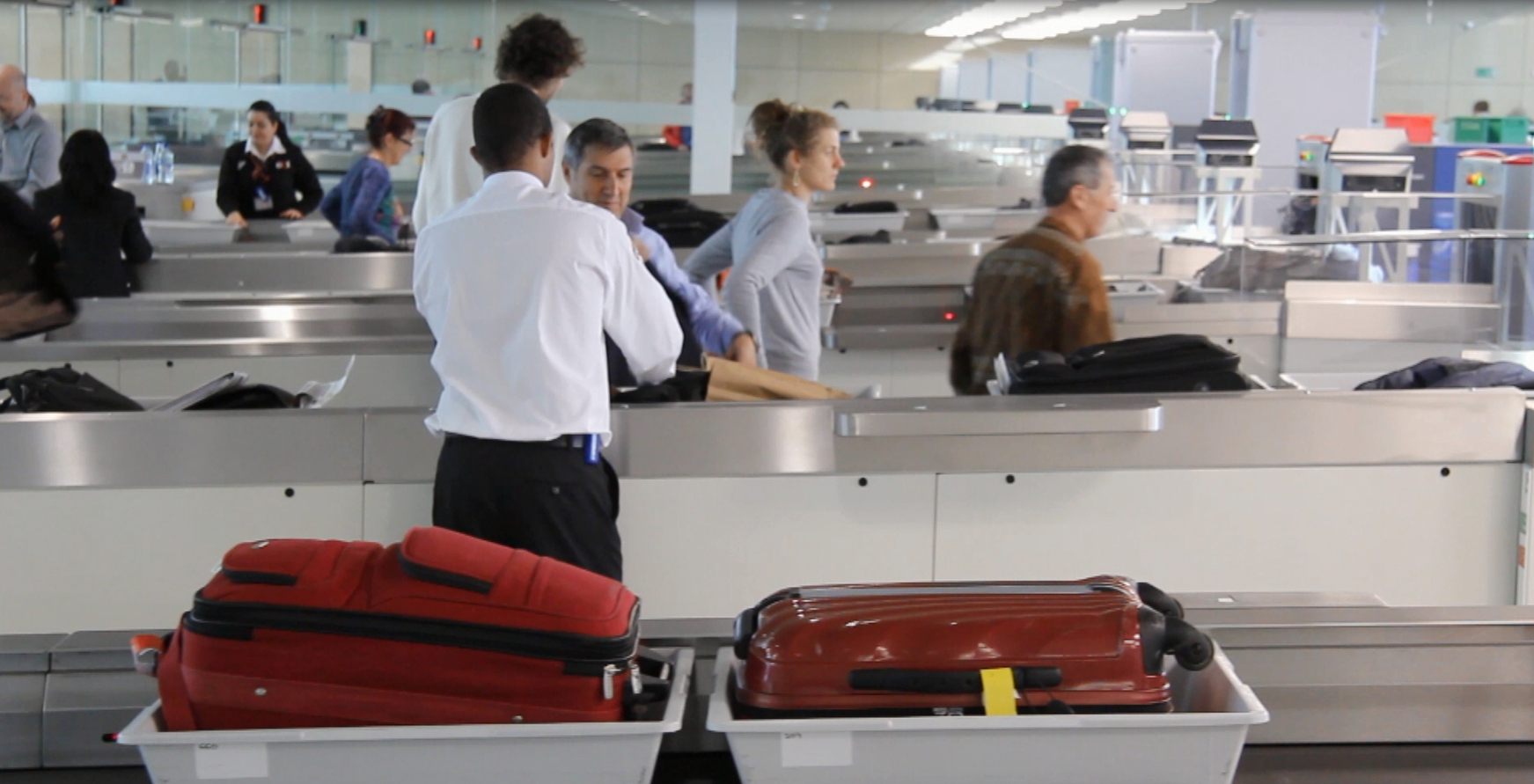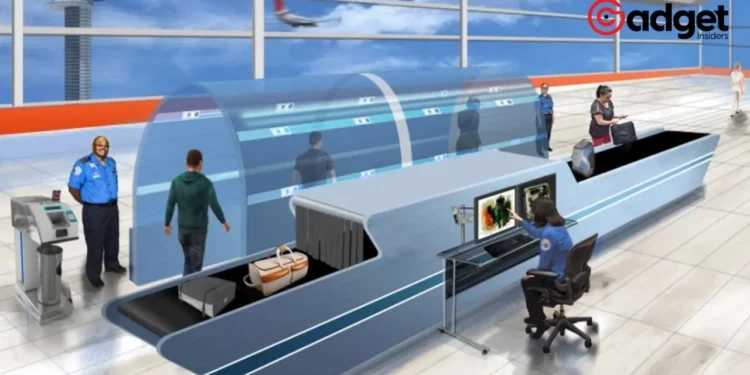In an age where technology constantly shapes and reshapes our everyday experiences, the latest advancement from the Transportation Security Administration (TSA) is set to transform the airport security landscape. At Harry Reid International, Las Vegas Airport, passengers now have the opportunity to experience the future of travel security firsthand with the introduction of cutting-edge self-screening lanes.
This innovative approach not only streamlines the security process but also redefines passenger convenience and safety.

The Dawn of Self-Screening
Gone are the days of long waits and intrusive pat-downs at airport security checkpoints. In a bold move, TSA introduces self-screening lanes designed to empower passengers while maintaining the highest security standards.
Spearheaded by Dimitri Kusnezov, the undersecretary for science and technology at the U.S. Department of Homeland Security, these lanes represent a leap forward in travel technology.
Self-screening lanes are outfitted with user-friendly interfaces that guide passengers through the screening procedure autonomously. These lanes were initially made available solely at the Las Vegas airport for customers who were enrolled in the Transportation Security Administration’s PreCheck program.
Compared to the conventional security checks, this is a considerable departure, to reduce the amount of time passengers have to wait and improve the entire experience of traveling through an airport.
New self-screening technology could make the process of airport security faster and safer — if TSA can work out the kinks.@carterevans got a sneak peek. pic.twitter.com/MYOgtQb1cd
— CBS Mornings (@CBSMornings) March 6, 2024
Las Vegas Airport: A New Chapter in Airport Security
John Fortune, the program manager of the “Screening at Speed” initiative, alongside Kusnezov, highlighted the dual benefits of the system: improving passenger experience and ensuring security effectiveness.
The technology behind these lanes is revolutionary, featuring an inspection system resembling futuristic medical imaging equipment. This not only expedites the screening process but also incorporates an automated bin return system that uses ultraviolet light to sanitize trays after each use.
Passengers will find themselves in individual clear glass body scanning booths, equipped with internal video displays instructing them on the correct posture for scanning. Utilizing millimeter wave technology, these booths are designed to maximize privacy and efficiency, allowing travelers to proceed at their own pace without direct interaction with TSA officers.
Beyond Efficiency: Enhancing the Travel Experience at Las Vegas Airport
Christina Peach, a TSA administrator, emphasized the system’s goal of minimizing direct interaction between passengers and officers, thus ensuring a seamless and less intrusive screening process. This innovation not only enhances the efficiency of airport security procedures but also significantly improves the passenger experience.
R. Carter Langston, a TSA spokesman, reported that travelers enrolled in the TSA PreCheck program could breeze through the screening in under 10 minutes, a stark contrast to the 30 minutes typically required for standard checks.
Furthermore, the system’s efficiency could potentially reduce the number of TSA officers needed per lane, reallocating resources to other critical security tasks.

Despite these advancements, Dimitri Kusnezov and Karen Burke, the TSA federal security director in Nevada, assured that the introduction of self-screening lanes would not lead to job losses.
Instead, TSA personnel, including union members, would be reassigned to focus on broader security priorities, ensuring that the shift towards technological solutions does not come at the expense of valuable human expertise.
Looking Ahead: Las Vegas Airport
The debut of self-screening lanes at Las Vegas airport is just the beginning of what promises to be a transformative period for airport security. As travelers worldwide seek more efficient and less invasive security processes, TSA’s innovative approach could very well set the standard for airports globally.
With the promise of reduced wait times, enhanced safety, and a focus on passenger convenience, the future of airport security looks brighter than ever.










